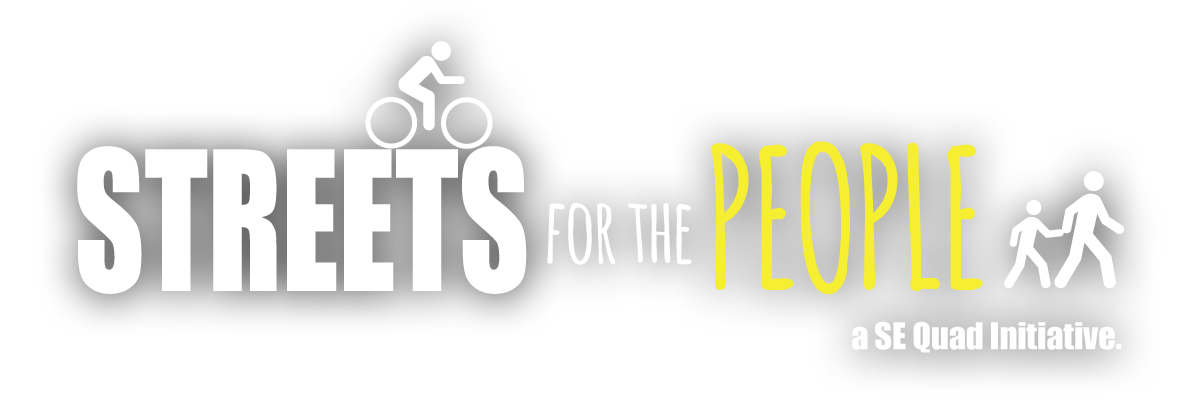![[Photo by Walk Bike Pittsford]](http://reconnectrochester.org/southeast/wp-content/uploads/2017/01/village-corner.jpg)
- 46,149 pedestrians were killed in the United States during that 9 year period
- 13 people on foot die each day because they were struck by a vehicle
- More pedestrians were killed by drivers in the US than by natural disasters
The previous report was two years ago and I will say that the natural disaster statistic has improved. You were 16x more likely to die as a pedestrian than in a natural disaster in the last report; now, you are only 7x more likely. I don’t have the storm data to make a call on why that is. But I do know that traffic deaths in this country are on the rise, which is bad news for everyone in or out of a car. 100 people die in car crashes every day. The National Safety Council predicts that this past year’s traffic death toll will top 40,000, which is the highest in almost a decade. The number of deaths from vehicle crashes annually in this country “is greater than the annual US military death toll during each war America has ever fought except the Civil War and the two world wars.”
If fatalities for people IN cars is getting worse, it doesn’t bode well for the most vulnerable users of our streets — pedestrians.
So Who Is Most at Risk?
According to Smart Growth America’s report: “Specifically, Native Americans and African Americans, as well as adults 65 years and older, are all at much higher risk of being struck and killed by a car while walking than people in other demographics.”
![[Courtesy of <a href="https://smartgrowthamerica.org/dangerous-by-design/" target=new>Dangerous By Design 2016</a>]](http://reconnectrochester.org/southeast/wp-content/uploads/2017/01/smart-growth-pedestrian-deaths-by-race.png)
To learn more about why that latter point is so pertinent to Rochester, where 34% of the City’s population lives in poverty, please take a look at Reconnect Rochester’s series on Transportation and Poverty.
Pedestrians in Florida Have It the Worst:
According to this year’s report and for the 4th time in a row, Florida is the most dangerous state in the nation for pedestrians — with 7 of the most dangerous municipalities on the list. Orlando is no longer the most dangerous in the nation, having slipped to third. Fort Myers, FL is now the deadliest place for pedestrians to live. Here’s a map of the top 20 most dangerous areas in the nation:
![[Courtesy of Dangerous By Design 2016]](http://reconnectrochester.org/southeast/wp-content/uploads/2017/01/Map-of-top-10-dangerous-pedestrian-places.png)
How Does Rochester Stack Up?
Out of 104 cities, Rochester ranks 14th for pedestrian safety (slipping from 9th previously). The good news is that Rochester’s Pedestrian Danger Index score improved from 33.97 in the 2014 report to 29. There were 113 pedestrian deaths from 2005 to 2014. The bad news is that doesn’t include this past year’s tally of pedestrian deaths on Lake Avenue and other roads. There are more than 500 crashes involving pedestrians and cyclists in Monroe County each year. We clearly have more work to do.
What Can Be Done?
A common complaint heard when a pedestrian is hit by a car in Rochester is that he or she shouldn’t have been walking or crossing in that location. But we also know that many of our community streets do not have safe and continuous pedestrian infrastructure – and on busier roadways safe crossings are often few and far between. Many people on foot have little choice but to walk along side of, and cross those streets.
The number one recommendation given by the Dangerous for Design report is to improve street design. Almost all car crashes are caused by human error — things like driving under the influence of drugs or alcohol, speeding, falling asleep and distracted driving.
How do you minimize the impact of human error? By designing our community streets so drivers have to drive at slower speeds, more cautiously and pay more attention — narrower lanes, fewer lanes, median islands, etc. And providing design elements that give people safety zones — trees, sidewalks, pedestrian islands, shorter crossing distances and slower traffic speeds. Enforcement and education are a part of the solution too. “We must use every tool available to improve safety for pedestrians.”
The impact of street design reached a milestone this month as a New York State of Appeals case found New York City 40% responsible for a crash involving a 12 year-old boy on a bike in 2004. The driver, who pleaded guilty, was driving a minimum of 54 mph in a 30 mph zone when he hit the young boy.
The responsibility begins with all of us who walk, drive, ride, roll and vote. Pay attention and give input when your community is updating its Active Transportation and Comprehensive Plans. When you receive a notice about a road project or new development in your neighborhood, read about it and attend public meetings if you can. Ask questions, speak up and participate. Our community streets are for people.
And in the meantime, remember that in spite of having to trudge through wintery streets in Rochester, be grateful you aren’t a pedestrian in Orlando.

One thought on “Report: Streets Not Designed to Serve Everyone in Community”
For almost 33 years, I reside in the area of Rochester, N.Y. then I really experience the close calls with the careless, and speedy drivers who is on cell phone lines as I make the narrow esacpes in action so quickly as I greatly use the vision to watch out despite of congenital deafness in quick thinking. I strongly remain on self-defense to look out the speedy cars through the red light as many speedy drivers don’t comply with the state traffic laws and traffic regulations. When I was young at my age, my late close uncle who was our family physician with his Ph.D. and M.D. degrees had taught me as I was a very, close niece to him in a fact.